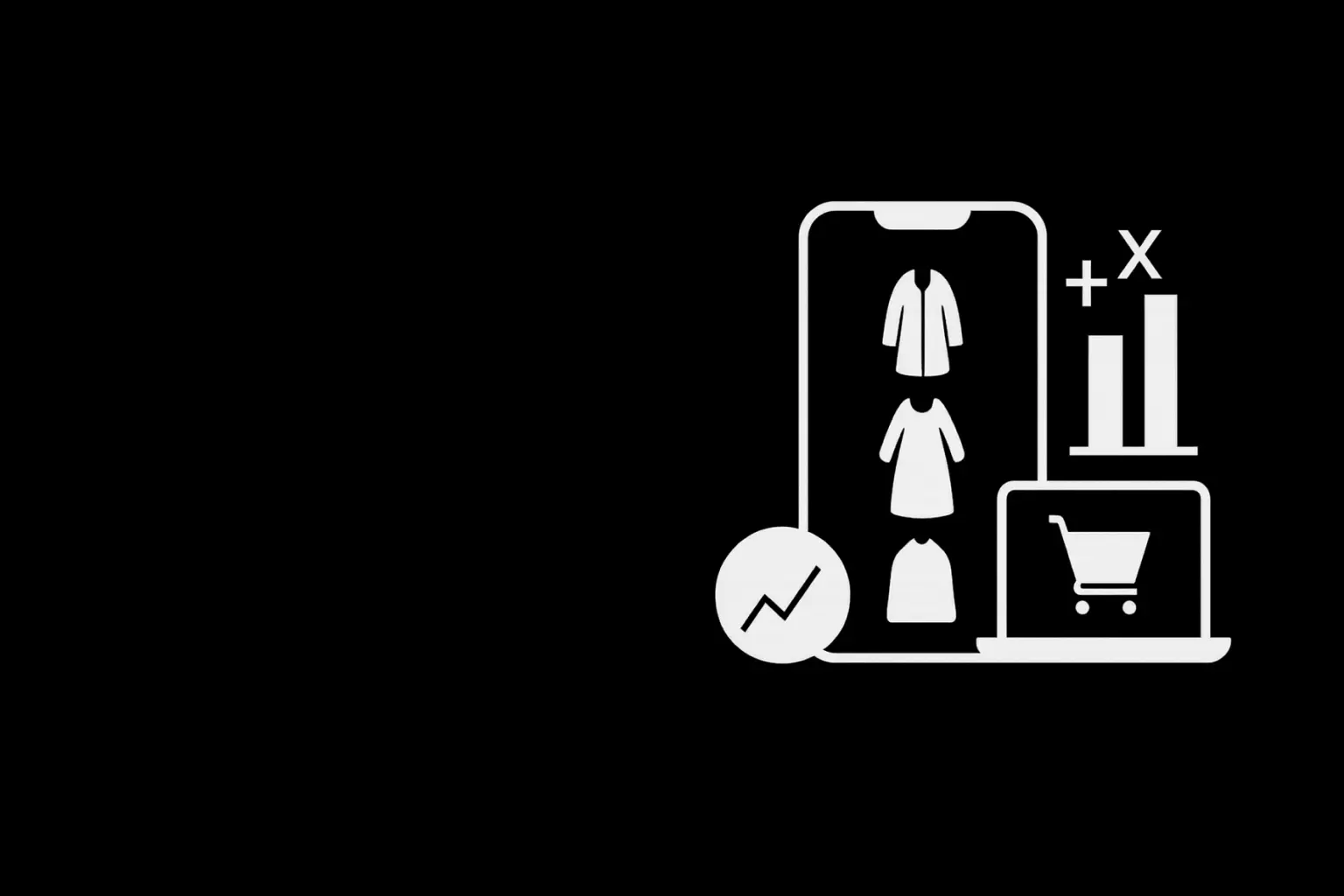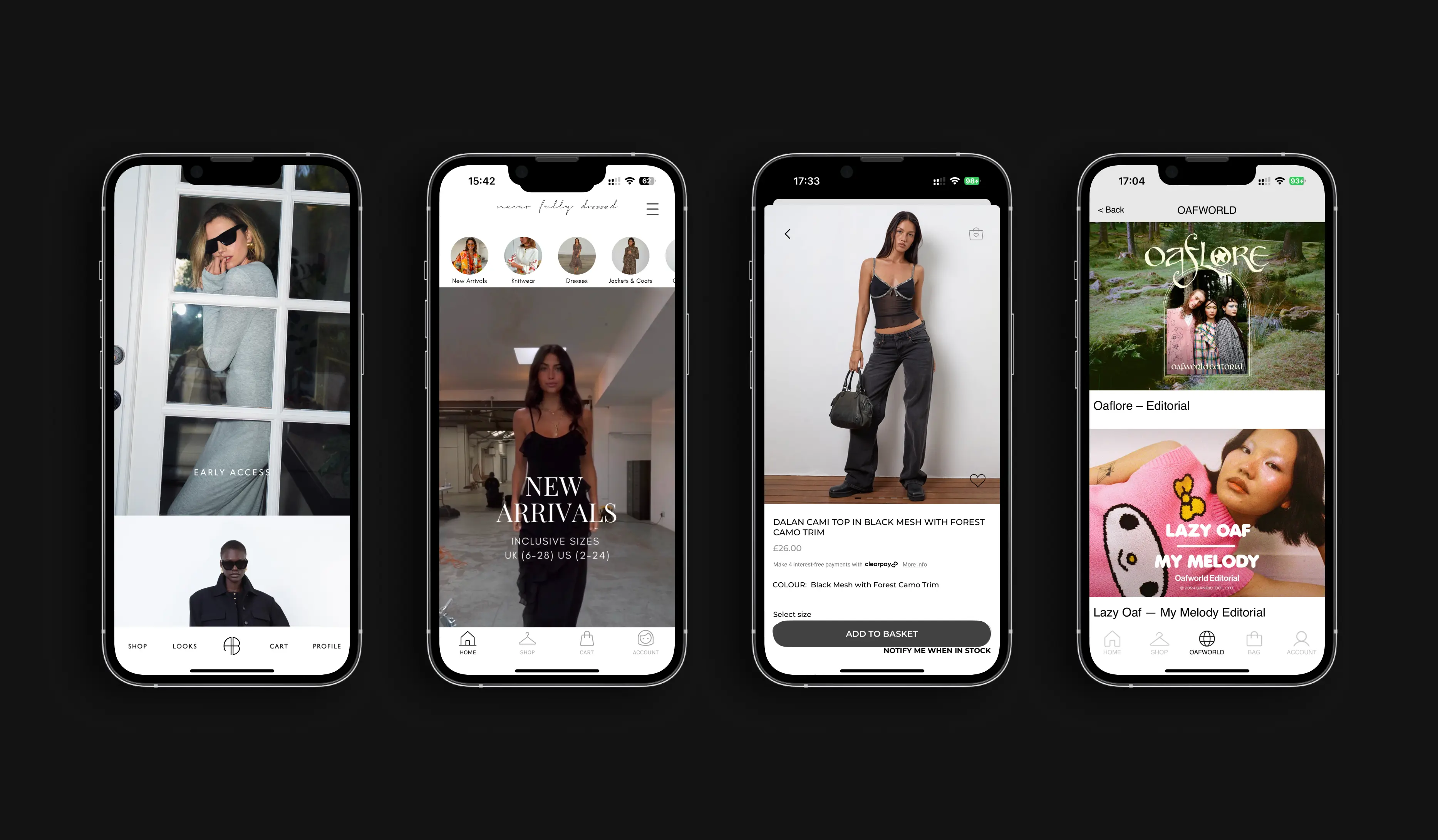The Ultimate Guide to Push Notifications for E-Commerce
In today's competitive e-commerce landscape, customer engagement is crucial for driving sales and ensuring long-term success. With consumers receiving a constant influx of emails, SMS and ads, businesses need a more direct and immediate way to communicate with their audience. This is where push notifications come in. These real-time alerts provide a powerful channel for engaging customers, promoting offers, and boosting conversions, making them an essential tool for any e-commerce business looking to increase customer retention and revenue.
Author:
Josh Gare
Publish date:
14th February 2025
10 min read
What Are Push Notifications in E-Commerce?
Push notifications are real-time alerts sent directly to a user's device through a mobile app. These notifications help e-commerce businesses engage customers, promote sales, recover abandoned carts, and drive retention. Unlike emails, which can sit unopened for days, push notifications grab attention immediately, making them one of the most effective marketing tools available to online retailers.
What are the Reasons for sending E-Commerce Push Notifications?

1. Announcing New Offers & Product Drops
One of the most obvious and widely used strategies is notifying users about new product launches and exclusive offers. These notifications drive excitement and encourage immediate engagement, helping boost sales and customer loyalty.
2. Sharing Offers with Targeted User Groups
A more advanced and highly effective use case is segmenting users based on their behaviour, location, or past purchases to send tailored time-sensitive offers. This strategy ensures that the right message reaches the right audience at the right time. A great example of this approach in action can be seen with the brand Represent, whio effectively leverage this strategy to maximise their push notification conversions.
3. Segmentation by In-App Events
Another powerful segmentation technique is based on user interactions within the app. By tracking actions such as product views, category visits, or wishlist additions, businesses can create cohorts of engaged users and re-target them with relevant offers and recommendations.
4. Abandoned Cart Notifications
Perhaps the most effective example of segmented push notifications is abandoned-cart recovery. Users who abandon their purchase receive an automated notification reminding them of the items left in their cart, often with an incentive like a discount or free shipping to encourage them to complete their purchase. These reminders significantly improve conversion rates and reduce lost sales.

How to Send Push Notifications for E-Commerce?
To send push notifications, you need a mobile app for your store. By turning your e-commerce store into a mobile app, you can engage customers who install the app through automated, segmented, and broadcast push notifications.
If you're a Shopify merchant, Venn Apps offers an easy way to transform your store into a fully native mobile app. With Venn Apps, you can send unlimited push notifications alongside expert guidance on how to maximise their effectiveness. Get in touch here to learn more.
Push Notification Best Practices for E-Commerce
To maximise conversions and engagement, it's important to follow push notification best practices. Here are some common best practices for sending e-commerce push notifications:
1. Personalisation is Key
Customers respond better to tailored messages. Use their name, previous purchases, or interactions to craft personalised notifications. Personalised push notifications can increase conversion rates by up to 4x compared to generic messages and can double long-term retention.

2. Timing Matters
Send push notifications at optimal times based on user behaviour and time zones. Avoid sending messages late at night or during working hours unless highly relevant. For example, studies indicate that the optimal time to send a discount push notification is between 6-8pm.
3. Keep It Short and Engaging
- iOS push notification body character limit: 178 characters
- Android push notification body character limit: 240 characters
Notifications that are longer than the above limits will contain cut-off text, hampering engagement rates. Equally it's important that push notification titles are between 25-50 characters, as text will be truncated if they're any longer. Keep the notifications concise & compelling to increase readability and engagement. Avoid overloading notifications with excessive text—stick to a clear, actionable message that grabs attention quickly.
4. Use Rich Media (Images, Emojis, and GIFs)
Adding images, videos, or emojis can significantly improve click-through rates (CTR). Visuals make notifications more appealing and engaging, increasing the likelihood of customer interaction.
5. Create a Sense of Urgency
Use words like “Limited Time Offer”, “Flash Sale”, and “Only a Few Left” to encourage quick action. Adding countdown timers or expiration times can further enhance urgency, leading to higher conversions.
6. A/B Test and Analyse Performance
Test different messaging styles, CTAs, and timing to find what works best for your audience. Use analytics to track open rates, CTRs, and conversions to refine future push notification campaigns.
If you want to learn more about how industry leading brand such as Represent effectively leverage push notifications, check out our recent webinar with Loyalty Lion below:
High-Converting Push Notification Templates for E-Commerce
One of the most important factors in improving push notification conversion rates is the quality of the message itself. Writing high-quality, engaging copy is essential to capturing your customers' attention and motivating them to take action.
Here are some effective push notification ideas and templates to boost engagement and drive conversions:
Cart Abandonment Recovery
📦 "Forgot something? Your cart is waiting! Complete your order now and get 10% off. Hurry, stock is running out!"
Flash Sale Alert
🔥 "Sale Alert! Get 50% off for the next 2 hours only. Shop Now!"
Back-in-Stock Notification
⏳ "Good news! Your favourite [Product Name] is back in stock. Grab yours before it’s gone!"
Price Drop Notification
💰 "The price of [Product Name] just dropped! Don’t miss out – order now before the deal ends."
Exclusive VIP Offer
🎉 "Hey [First Name], a new clothing like! Enjoy 20% off your next order. Tap to claim your discount."
New Drop Live
👚 Just dropped! [Collection Name] is now live -order now before it sells out!
Push Notification Conversion Rates & How to Improve Them
The average push notification conversion rate for e-commerce ranges from 3-7%. Here’s how you can improve it:
- Ensure your call-to-action (CTA) is direct, compelling, and encourages immediate action.
- Segment your audience to ensure messaging is relevant and targeted.
- Leverage user behaviour data to send personalised triggered notifications, such as abandoned cart notifications or back-in-stock.
- Optimise notification frequency to prevent overwhelming users. We recommend sending between 2-3/week to maiximise conversions.
- Test send times and see when conversion rates are at their highest. Keep all variables the same other than send time to ensure a fair test.
- Leverage push with app exclusive features to maximise engagement and provide users with a compelling reason to click through on the notifications.
Venn Apps has a host of app-exclusive features that are incredibly effective at driving conversions when paired with push notifications. These include app-specific discounting, app exclusive drops and a curated Shop the Look. By strategically leveraging push notifications alongside these features, businesses can see conversion rates increase by over 100%!
SMS vs. Push Notifications: Which Is Better for E-Commerce?
SMS marketing is effective, with a 98% open rate, but each message incurs a cost, making large-scale SMS campaigns expensive. In contrast, push notifications are free when using platforms like Venn Apps. Additionally, while SMS can feel intrusive, push notifications engage users without the same level of disruption, making them ideal for flash sales, cart recovery, and new product launches.
Email vs. Push Notifications: Which Is Better for E-Commerce?
Email marketing remains a key tool for newsletters and promotions, but its open rates (20-30%) and click-through rates (1-2%) fall short compared to push notifications. Push notifications boast a 90% open rate and a 10% CTR, making them far more effective at driving immediate action. Additionally, push notifications support deep linking, which seamlessly directs users to specific in-app pages, increasing conversion rates.
Why Push Notifications Are the Preferred Choice
- Higher Open & Click-Through Rates – 90% open rate vs. email’s 20-30%.
- Cost-Free – Unlike SMS, push notifications have zero cost per message.
- Higher Conversions with Deep Linking – Users can be taken straight to the desired page.
- Better Engagement – Timely and relevant messages drive stronger user interaction.
Final Thoughts
Push notifications are an essential tool for e-commerce businesses looking to enhance customer engagement, drive sales, and recover lost revenue. With high open and conversion rates, they outperform traditional marketing channels like email and SMS. By leveraging segmentation, personalisation, and A/B testing, brands can optimise their push notification strategy for maximum impact. Whether it's recovering abandoned carts, announcing flash sales, or delivering personalised promotions, push notifications provide a direct and cost-effective way to connect with customers in real time. Implementing these best practices will help you boost engagement, increase conversions, and grow your e-commerce business.
If you want to effectively implement push notifications for your brand, get in touch with Venn Apps today!
FAQs
Can I send push notifications without a mobile app?
No, push notifications require a mobile app or a Progressive Web App (PWA) to function. E-commerce businesses need an app to enable push notifications for their customers.
How often should I send push notifications?
The optimal frequency depends on the audience, but generally, 2-4 notifications per week are ideal to maintain engagement without overwhelming users.
Are push notifications free to send?
Yes, push notifications are free to send through platforms like Venn Apps, unlike SMS marketing, which incurs a per-message cost.
How do push notifications improve sales for e-commerce businesses?
Push notifications improve sales by delivering targeted offers, abandoned cart reminders, flash sale alerts, and personalised promotions that encourage users to take immediate action.
Do push notifications require user opt-in?
Yes, it is necessary for users to opt in to push notifications. However, push notification opt-in rates tend to be significantly higher than email or SMS, often at over 60%
related blogs
9 Strategies to Increase Customer Lifetime Value (CLV) in eCommerce
15 min read
author:
Josh Gare
publish date:
11th April 2025
Strategy Spotlight

Product Updates H1 '25: More Control, Better Insights, Greater Flexibility
10 min read
author:
Max Hatter
publish date:
24th July 2025
Product News
.png)
9 Strategies to Increase Customer Lifetime Value (CLV) in eCommerce
15 min read
author:
Josh Gare
publish date:
11th April 2025
Strategy Spotlight

Product Updates H1 '25: More Control, Better Insights, Greater Flexibility
10 min read
author:
Max Hatter
publish date:
24th July 2025
Product News
.png)
8 Best Shopify Mobile App Builders in 2025
10 min read
author:
Josh Gare
publish date:
7th February 2025
App Development
.png)
Push Notifications vs Email: Which Drives More Engagement?
10 min read
author:
Max Hatter
publish date:
20th June 2025
Digital Marketing

Shopify Mobile App Development Services: Best Options for 2025
10 min read
author:
Max Hatter
publish date:
5th June 2025
App Development

How To Build An eCommerce App: Complete Guide (2025)
15 Min Read
author:
Max Hatter
publish date:
30th May 2025
App Development

35 Essential Stats on Mobile Commerce in 2025
10 Min Read
author:
Max Hatter
publish date:
16th May 2025
Industry Insights

9 Best ECommerce Mobile App Builders (2025)
10 min read
author:
Max Hatter
publish date:
5th September 2025
App Development

How to Optimize Your Shopify Store for Mobile: The Ultimate Guide
10 min read
author:
Josh Gare
publish date:
16th April 2025
Industry Insights

Guide to Push Notifications for a Shopify Mobile App
5 min read
author:
Josh Gare
publish date:
28th March 2025
Digital Marketing

12 Best Shopify Apps for Clothing & Fashion Stores (2025)
10 Min Read
author:
Josh Gare
publish date:
19th March 2025
Industry Insights

How to turn your Shopify Store into a Native Mobile App (2025)
10 min read
author:
Josh Gare
publish date:
17th March 2025
App Development

9 Essential E-Commerce Growth Strategies for 2025
15 min read
author:
Josh Gare
publish date:
14th March 2025
Industry Insights

Should Shopify Brands Develop Mobile Apps In-House?
15 min read
author:
Josh Gare
publish date:
7th March 2025
App Development

8 Successful Shopify Brands with a Mobile App
10 min read
author:
Josh Gare
publish date:
28th February 2025
Industry Insights
.png)
The Ultimate Guide to Push Notifications for E-Commerce
10 min read
author:
Josh Gare
publish date:
14th February 2025
Digital Marketing
.png)
Shopify Summer Editions: 5 Things We’re Most Excited About
10 Min Read
author:
Max Hatter
publish date:
2nd June 2025
Industry Insights

The 5 Best Tapcart Alternatives To Build A Shopify Mobile App
10 min read
author:
Max Hatter
publish date:
1st July 2025
App Development
.webp)
10 tips to increase app downloads and user activity for Shopify merchants
5 min read
author:
Josh Gare
publish date:
18th November 2024
Digital Marketing

Delivering Omnichannel Loyalty with Mobile Wallet Passes
10 min read
author:
Max Hatter
publish date:
6th May 2025
Product News

WANT TO LEARN MORE ABOUT MOBILE APPS?


